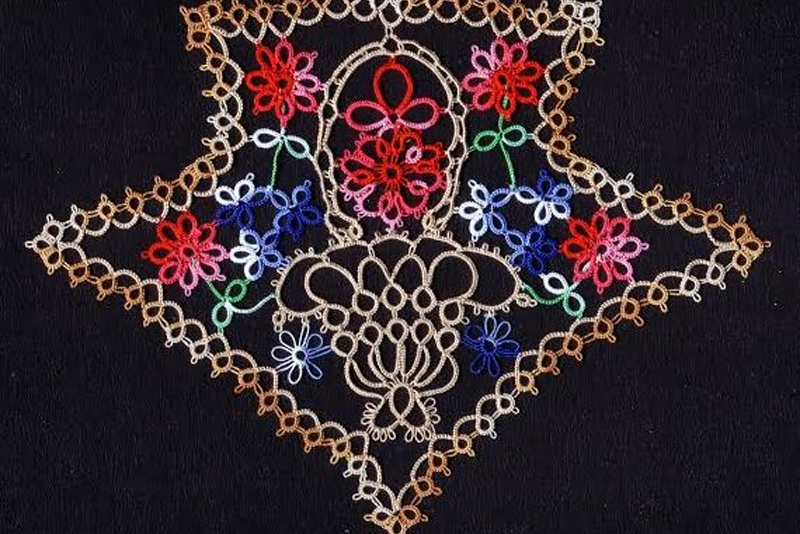I do research on tatting, tatting history and tatting books often. I particularly get excited when I come across a tatting title I do not recognize. So imagine my delight when I stumbled across a recent reprint of a vintage tatting pattern by "Anonymous." It showed only the cover below. I ordered and paid and waited for the mail to deliver it.
I admit it, I was all a-twitter. When it arrived I tore off the protective cardboard and began to flip pages. Whoosh! That was the sound of my disappointment escaping. This 8 x 5 paperback titled "Tatting - A Fascinating Book of Delicate Lace Designs." is a reproduction in half-size of a well-known "10-center" booklet.
This is actually Book #207 published by The Spool Cotton Co. (my copy has a tear where the date of publication is printed) later Coats & Clark.
 |
 |
Original copies of this vintage tatting booklet are available on the secondary market. For half the price of this "Anonymous" reprint. There are several Coats & Clark patterns available online for free download, too.
 |
Every other chain in this pattern #8315 has no picots. This would be an excellent opportunity to create the chain by direct method, i.e., wrapping the ds onto the ball thread( in the manner of wrapping the bottom half of a split ring) instead of tatting the ds. There are 5 picots on the alternating chains which offer a chance to learn the use of the picot gauge. (The photo shows that the number of picots on the chain sometimes varied.) Beginners will want to watch closely the space between the two consecutive rings. There should be no bare thread showing. Holding the first ring in the pinch will help. |
 |
Edging #8323 was originally intended to be tatted in three rounds. The first round was all unjoined rings with bare shuttle thread between them. This bare thread had to be sewn down to the hanky first in order to continue the second and third round easily. It could have been done unsewn but would have been very awkward to hold and accomplish the joins. The last diagram shows how the same finished effect can be obtained by tatting only two rounds, if the direction of the first row of rings is reversed. Instead of sewing down the bare shuttle thread between the rings, the rings are captured by the picot and sewn down. |







